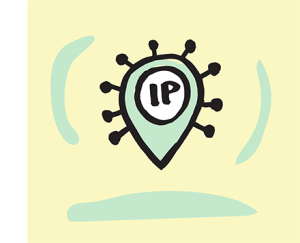What is GeoIP?

The internet shrinks the distance between people. A web page hosted in Los Angeles can be viewed in Singapore in under a second. But some organizations want to restrict who can access specific pages or streaming content. Or they want to adjust the content based on where the user is.
- GeoIP is the name given to the databases that associate a location with each IP address.
- GeoIP data is used by organizations that care about the physical location of users. That includes anyone who’s licensed intellectual property for a specific market, like a country.
- Engineers have created a way for network operators to publish where their IP addresses are used. GeoIP database operators can find links to each network’s geofeed file in their RIR database registration. About a quarter of networks published these files by the end of September 2024.
Intellectual property rights holders might want to restrict access based on whether the streaming content is licensed in the user’s location. They might also want to adjust the page language, pricing information, or advertising for the same reason.
While people move around the world a lot, IP addresses are relatively static. So, organizations work out where IP addresses are and use that data when choosing what to serve, apply fraud detection algorithms, and more. They call this GeoIP data.
The detection and maintenance of GeoIP data has not always been easy. If a network was listed as Paris, France instead of Paris, Texas, the subscribers could be upset. Changing the data could take weeks. So internet engineers created a machine readable format, called geofeed, that can be used by network operators. They can publish their own GeoIP information in the granularity that matters to them.
Most of the GeoIP data providers now automatically discover and use that data to update the data they publish. In 2024, about a quarter of the network prefixes (address blocks) announced on the internet have a geofeed file for their addresses.
Internet engineers have a website showing how to create the geofeed file and make it discoverable. The site, https://geolocatemuch.com/, can test your published file, so you know it will work.